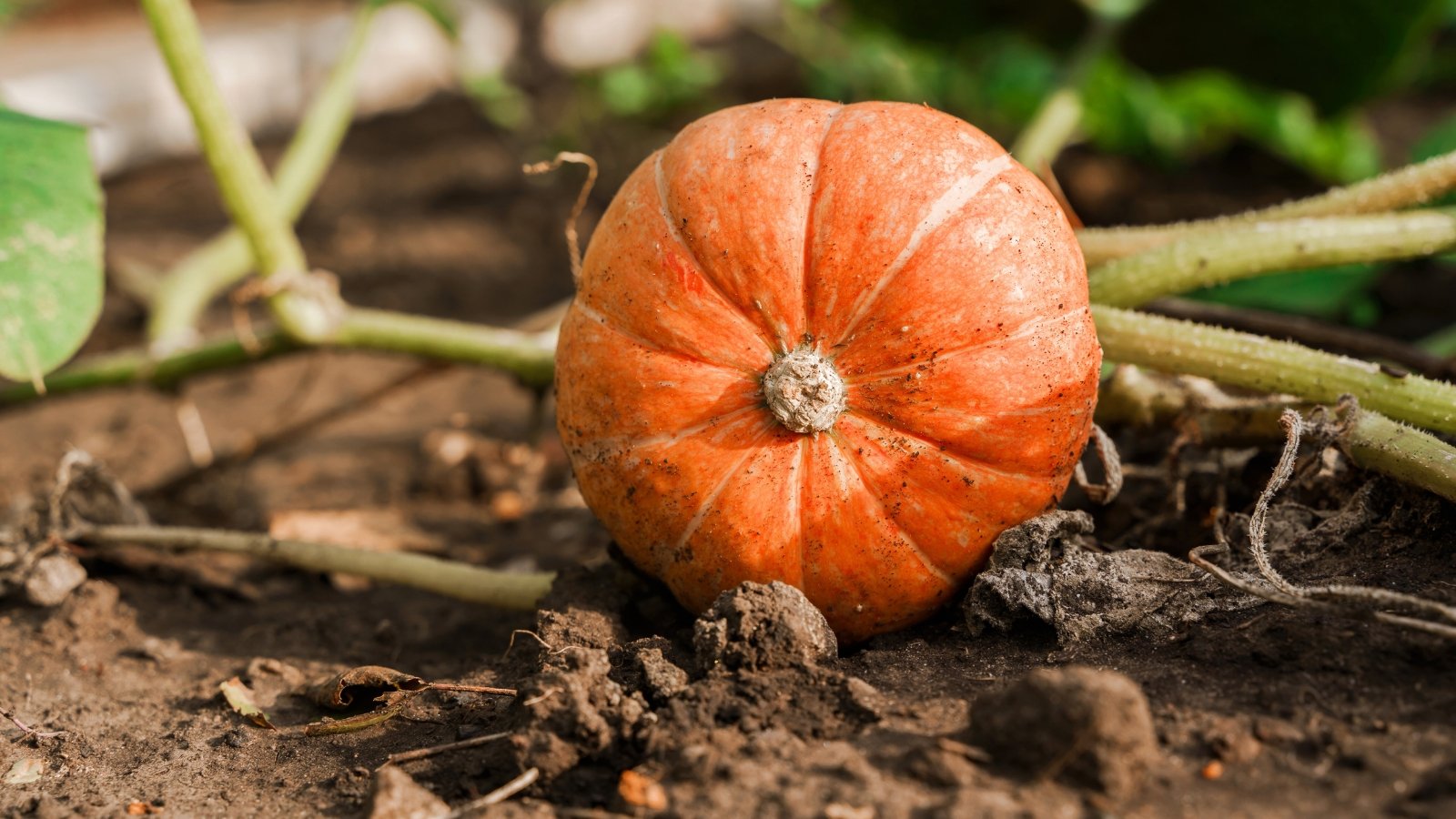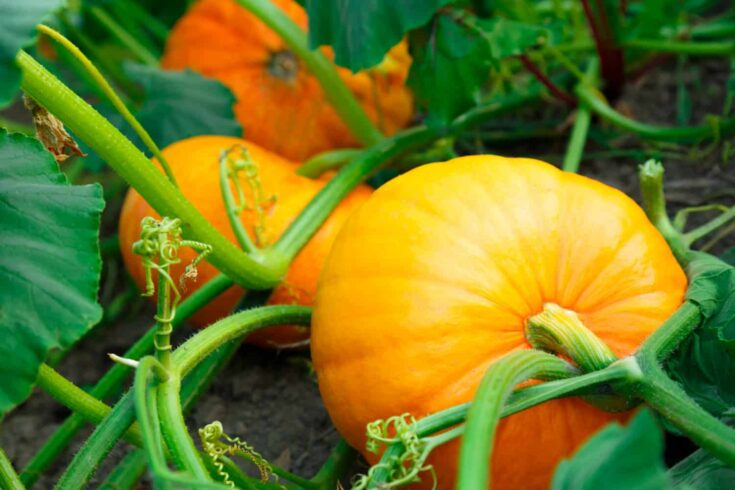How Many Pumpkins Per Plant? Everything You Need to Know for a Bigger, Better Harvest
Learn how many pumpkins you can expect per plant, and how to increase your yield through strategic care, variety selection, and growing techniques.
Pumpkins are one of the most iconic crops in the vegetable garden—synonymous with autumn, pies, carving, and colorful fall décor. But if you’re growing pumpkins for the first time (or trying to improve your yield), the most common question is:
“How many pumpkins will I get per plant?”
The answer? It depends. Several factors influence pumpkin yield per plant—from the type of variety and pollination success to pruning, soil health, and growing conditions. Whether you’re growing for fun or profit, understanding these factors can help you grow bigger vines and produce more fruit per plant.
Let’s dig into everything you need to know!

How Many Pumpkins Can You Expect Per Plant?
On average, here’s what most growers can expect:
| Pumpkin Type | Pumpkins Per Plant |
|---|---|
| Miniature | 8–12+ |
| Small/Ornamental | 3–6 |
| Medium | 2–5 |
| Large/Jack-O’-Lantern | 1–2 |
| Giant (Atlantic Giant, Big Max) | 1 |
👉 Key Point: Pumpkin plants are vigorous vines that produce both male and female flowers, but each vine usually only supports a few mature fruits due to the plant’s energy limits.
Factors That Affect Pumpkin Yield Per Plant
Let’s look at the major factors that influence the number of pumpkins each plant produces.
1. Variety (Cultivar) Selection
Not all pumpkins are created equal. Your yield potential heavily depends on the type you plant:
- Mini varieties (e.g., ‘Jack Be Little’, ‘Wee-B-Little’) produce many small fruits.
- Standard carving pumpkins (e.g., ‘Howden’, ‘Autumn Gold’) yield fewer, larger pumpkins.
- Giant pumpkins (e.g., ‘Dill’s Atlantic Giant’) are bred for size, not quantity.
Tip: If your goal is quantity over size, stick to miniature or pie pumpkin varieties.
2. Pollination Success
Pumpkin plants rely on insect pollinators—especially bees—to move pollen from male to female flowers.
- Poor pollination = few or no pumpkins.
- Each female flower only opens for one day, so timing and pollinator presence are critical.
Solutions:
- Plant bee-attracting flowers nearby (like zinnias, borage, and sunflowers).
- Hand pollinate with a small paintbrush if pollinators are scarce.
3. Spacing & Trellising
Pumpkin vines need lots of room to sprawl. Crowded vines compete for resources and shade each other out, reducing flower and fruit development.
- In-ground spacing: 3–5 feet between plants
- Row spacing: 6–8 feet apart
- Trellised small varieties: 18–24 inches apart with support
Overcrowded plants = lower yield.
4. Sunlight and Temperature
Pumpkins are warm-season plants that crave full sun (at least 6–8 hours per day) and consistent heat.
- Temperatures between 70°F and 90°F (21°C–32°C) are ideal.
- Too much shade or cold weather slows fruit development.
5. Soil Quality and Fertility
Healthy vines need rich, well-drained soil.
- pH range: 6.0 to 6.8
- Enrich beds with compost, aged manure, or a balanced fertilizer (10-10-10).
- Nitrogen boosts vine growth, but too much reduces flowering.
- Switch to phosphorus- and potassium-rich fertilizer (like 5-10-10) once flowers form.
6. Watering Consistency

Pumpkins are thirsty plants.
- 1–2 inches of water per week is ideal.
- Water deeply and infrequently.
- Inconsistent watering = poor fruit set and blossom end rot.
Use mulch to conserve soil moisture and regulate temperature.
7. Pruning and Vine Management
Pruning can increase fruit size and improve airflow, which reduces disease risk.
- For big pumpkins: prune to keep 1–2 main fruits and remove excess.
- For more fruit: allow secondary vines to grow and flower but maintain shape.
Tip: Bury vine nodes in soil to encourage secondary root growth.
8. Pest and Disease Control
Pests and diseases can ruin your yield fast.
Common threats:
- Squash bugs
- Cucumber beetles
- Powdery mildew
- Squash vine borers
Preventative strategies:
- Row covers (early season)
- Neem oil or insecticidal soap
- Crop rotation
- Disease-resistant varieties
9. Harvest Timing and Maturity
- Most pumpkins take 90–120 days from planting to harvest.
- Let pumpkins fully ripen on the vine for best flavor and storage.
- Harvest when skin is hard, color is deep, and vine starts to wither.
How to Boost Pumpkin Yield Per Plant
If you’re looking to maximize production, here are some proven techniques:
✅ Choose High-Yielding Varieties
Look for varieties bred for productivity, such as:
- ‘Baby Pam’ (pie pumpkin – 3–4 per plant)
- ‘Munchkin’ or ‘Jack Be Little’ (8–12+ per plant)
- ‘Spookie’ (small carving – 3–5 per plant)
✅ Start Seeds Indoors
- Start seeds 3–4 weeks before the last frost indoors.
- Transplant into warm soil (above 65°F).
- Use biodegradable pots to reduce transplant shock.
✅ Train and Manage Vines
Use trellises or guide vines outward to avoid tangling.
- Stake or support growing fruits.
- Clip secondary vines if the plant becomes unruly.
✅ Feed Regularly
Use a liquid fertilizer every 2–3 weeks.
- Use fish emulsion, compost tea, or water-soluble fertilizer during growth.
- Switch to low-nitrogen, high-potassium once fruits set.
✅ Monitor & Hand Pollinate
Each female flower gives one pumpkin if pollinated.
- Check for open flowers in early morning.
- Rub pollen from male to female with a brush.
- One male flower can pollinate multiple females.
When to Limit Pumpkins Per Vine

Even if your vine sets many fruits, it may not support them all.
For larger pumpkins:
- Limit fruit to 1–2 per plant.
- Remove other developing fruit early to concentrate energy.
For small pumpkins:
- Allow 4–10 fruits depending on size and vigor.
Troubleshooting Low Yields
| Problem | Possible Cause | Solution |
|---|---|---|
| No pumpkins | Poor pollination, all male flowers | Wait or hand pollinate |
| Flowers but no fruit | Nutrient imbalance (too much nitrogen) | Switch to bloom fertilizer |
| Fruits shriveling | Blossom end rot, poor pollination | Improve watering, add calcium |
| Small fruits only | Overcrowded, too many fruits | Thin and space out |
| Vines dying early | Vine borer, mildew | Use resistant varieties, apply neem |
Table of Contents
Common Questions About Pumpkin Yield (FAQs)
Q: Do all pumpkin flowers turn into pumpkins?
No. Only female flowers can become pumpkins. Male flowers appear first and don’t produce fruit. Proper pollination is needed for female flowers to develop fruit.
Q: Can I grow more than one pumpkin on a single vine?
Yes, especially for small and medium varieties. The number depends on vine health and space. For large or giant pumpkins, one or two fruits is ideal.
Q: How long does it take for pumpkins to grow after flowering?
Once a flower is pollinated, pumpkins usually take 45–55 days to reach maturity depending on the variety.
Q: What’s the best fertilizer for pumpkins?
Use a balanced fertilizer like 10-10-10 early in growth. Switch to 5-10-10 or bone meal and compost once flowering begins.
Q: Why are my pumpkins falling off the vine early?
This is often caused by:
- Poor pollination
- Extreme heat
- Irregular watering
- Pest damage
Q: Can I grow pumpkins in containers?
Yes—for miniature or bush-type varieties. Choose a large container (at least 15–20 gallons) and use a compact, patio-friendly cultivar like ‘Bush Baby’.
Q: How many pumpkin seeds should I plant per hill?
Plant 3–5 seeds per hill, then thin to the strongest 1–2 plants once they sprout.
Q: Can pruning vines increase pumpkin size?
Yes. Removing extra fruits and side vines can help the plant direct energy into fewer pumpkins, resulting in larger, better-formed fruit.
Q: Do pumpkins continue to grow after being picked?
No. Once harvested, pumpkins do not grow further. However, they can cure and improve in sweetness and skin toughness if left in a warm, dry spot.
Final Thoughts: More Pumpkins Start With Smart Growing

Pumpkin yield per plant isn’t just about luck—it’s the result of intentional care, good timing, and smart variety choices. Whether you’re hoping for a single giant gourd or a dozen mini pumpkins, success comes down to:
- Picking the right type for your goals
- Supporting pollinators or hand-pollinating
- Managing vines and spacing
- Feeding and watering consistently
- Controlling pests and disease
With the right approach, your pumpkin patch can be a high-yield, fall-harvest success.

